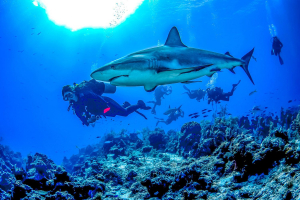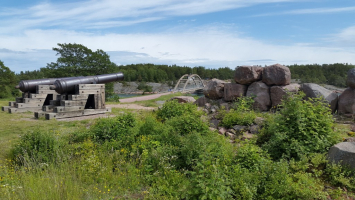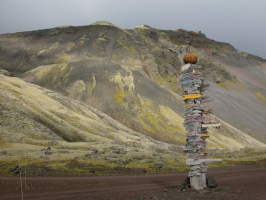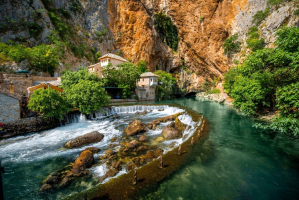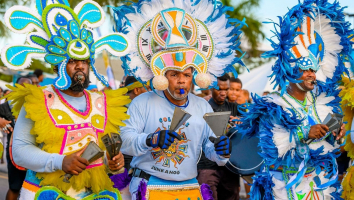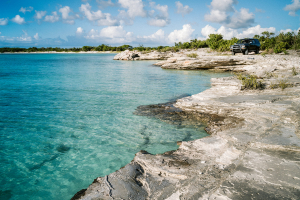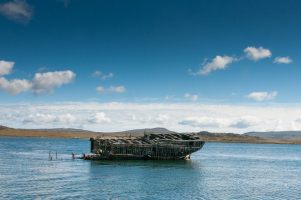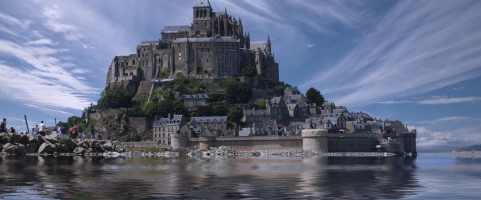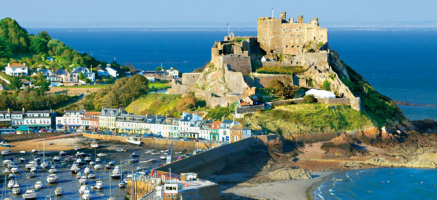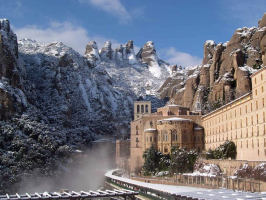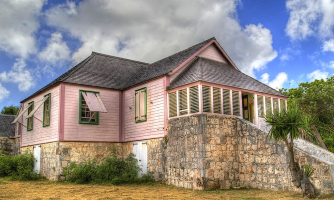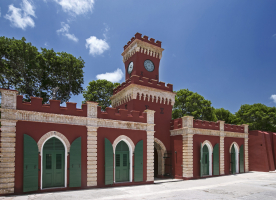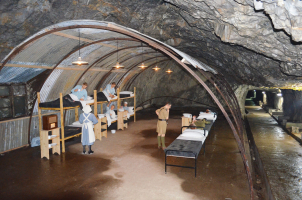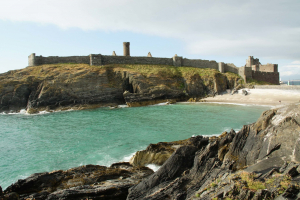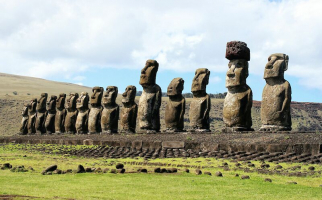Top 5 Most Beautiful Historical Sites in Turks and Caicos Islands (UK)
Are you interested in learning more about the Turks & Caicos Islands' history? When you're not on the water, exploring this Caribbean vacation spot is a great ... read more...way to pass the time, and there's lots of fascinating history to discover. Today, let's follow Toplist to the most beautiful historical sites in Turks and Caicos Islands.
-
Grand Turk Lighthouse is a lighthouse on Grand Turk Island, Turks and Caicos Islands. Built-in 1852, this lighthouse is the most beautiful historical sites in Turks and Caicos Islands and is the only lighthouse on this island.
It was designed by the architect Alexander Gordon to notify seafarers of the small reef. Constructed in the United Kingdom, it was brought in sections to the island. A lighthouse keeper used to stay at the lighthouse all night to oversee the lamps and sleep in the small keeper's home on the side during the day.Grand Turk Lighthouse is a whitewashed cast iron building that stands 60 feet tall (18 m). It began with eight miniature Argand oil lamps, which were powered by weights and machinery and had reflectors that magnified the light by 450 times. Because the first lamps were not powerful, they could not be seen on dark, stormy nights, resulting in shipwrecks off the coast long after the lighthouse was built. In 1943, the Chance Brothers of Birmingham, England, introduced brighter kerosene lamps and a more powerful Fresnel lens, which significantly improved the condition. The lighthouse was electrified in 1972, and it now serves as a powerful beacon light to guide sailors.
The lighthouse is no longer in use, but the grounds are open to the public for tourism. Keep in mind that tourists are not permitted to enter the lighthouse. The old light keeper home has a modest snack and souvenir shop, as well as a magnificent coastal promenade that runs along the top of the marine limestone cliffs.
Location: Grand Turk Island, Turks and Caicos Islands
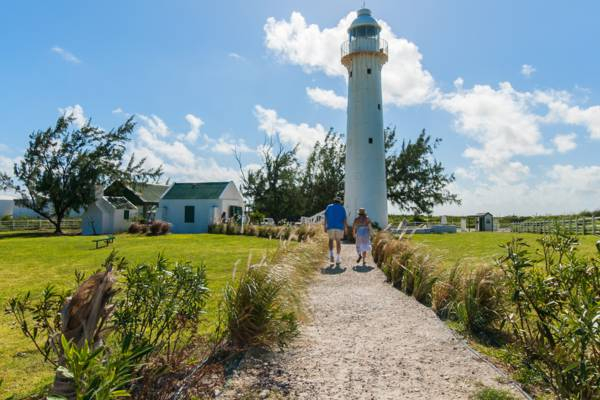
Photo: visittci 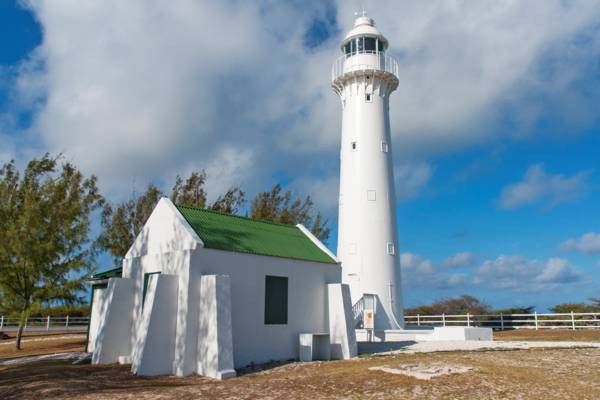
Photo: visittci -
Her Majesty's Prison is a modest colonial jail in Grand Turk's old town of Cockburn. Built in the 1830s, this waterfront building served as the country's lone prison until 1994. The Bell Tower, which was rung five times a day, is a significant landmark of the institution (except Sunday). It was rung at sunrise and sunset to signal the start and end of the work day. The location is now a historical tourist attraction.
Her Majesty's Prison has both men's and women's wards for daily life in prison. The inmates were fed three times a day and given 12 hours of sleep. Prisoners were also expected to work on occasion, such as smashing boulders with hammers for road use or supervised clean-up and upkeep around town. When a storm was approaching, it was normal procedure for non-serious offenders to be freed in order to care for their families, houses, and cattle.
The prison has had one big occurrence in its history that resulted in mass escapes. The prison's roof was ripped off and the external stone walls were damaged by the devastating hurricane of September 30, 1866, which destroyed 871 dwellings and badly damaged another 197. All the boats in the harbor were sunk, and 16 persons aboard Grand Turk were killed (along with 4 on nearby Salt Cay).Over the course of its existence, the prison underwent many additions to boost capacity. At any given time in the early years, there were between two and six prisoners, most of whom were incarcerated for drunkenness and other minor infractions. By the time it closed in 1994, the inmate population had risen to an average of 50 to 60 people.
When a cruise ship is in port, Her Majesty's Prison is usually open. The cost of admission for adults is $7. The tours are self-guided, and there are plenty of explanatory signs to help you figure out what you're looking at.Location: Grand Turk, Turks and Caicos Islands

Photo: visittci 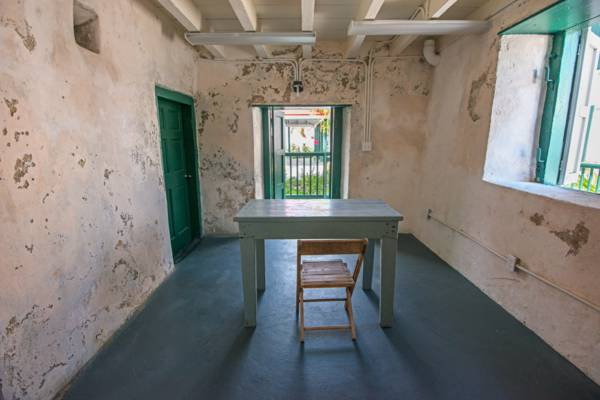
Photo: visittci -
The national museum, which is located on historic Front Street in Cockburn Town, Grand Turk, is the country's only museum (aside from a minor satellite location on Providenciales). The museum was founded in 1991 at Guinep House, one of Grand Turk's oldest structures still standing and it is considered one of the most beautiful historical sites in Turks and Caicos Islands.
The Molasses Reef Wreck, which is the oldest excavated European shipwreck in the Americas, was discovered to the southeast of West Caicos, prompting the establishment of the museum. The wreck site of this Portuguese or Spanish caravel was substantially damaged by explosives during an illicit treasure hunting expedition in the early 1970s after it was discovered. The Molasses Reef Wreck's surviving armaments and relics are now on display in the museum.
There are many exhibits in this museum about the Turks and Caicos' later history, including early European and Loyalist settlers, the Trouvadore slave ship, British Colonial and Victorian-era periods, and astronaut John Glenn's historic 1962 splashdown with the Friendship Seven space capsules. Spanish coins from the 1600s, vintage postal stamps, historical flags, primitive diving and wreck recovery equipment, and more are among the artifacts on display.
The Museum Shop is one of Grand Turk's top gift shops, and it's a must-visit if you're shopping for gifts. It serves as an official shop for the Middle Caicos Co-op, offering locally created baskets and other trinkets. Local writers' books (history and children's titles) are also available.The national museum is now available to the public. Cruise passengers and guests staying on Grand Turk pay $5 per person, while everyone else pays $7. Children under the age of 12 who are accompanied by an adult are admitted free of charge.
Location: Grand Turk, Turks and Caicos Islands

Photo: visittci 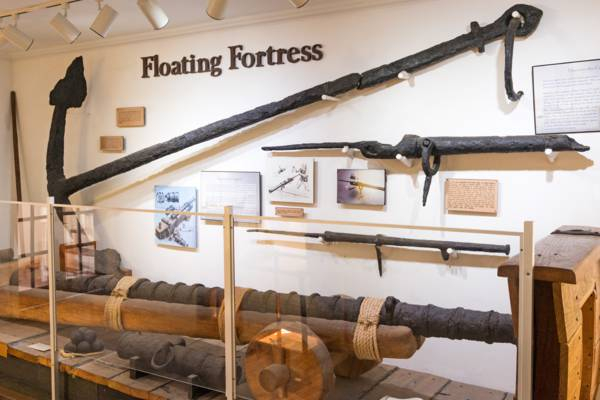
Photo: visittci -
The major historical landmark in Providenciales is Cheshire Hall Plantation, a wrecked late-1700s cotton plantation. This modest attraction provides an intriguing viewpoint on the Caicos Islands' Loyalist history and how it influenced the Turks and Caicos' growth as a nation.
The narrative of Cheshire Hall begins with Wade Stubbs, a Florida-based Loyalist planter. Wade Stubbs was granted land on North Caicos after the American War of Independence, and he developed Wade's Green, which became one of the most successful plantations in the Turks and Caicos. Thomas Stubbs established Cheshire Hall in the late 1700s to cultivate cotton, inspired by the success of his brother's plantation on North Caicos. The Stubbs family hails from England's Gawsworth County, and Thomas Stubbs named his business Cheshire Hall.
Cheshire Hall, which occupied over 5000 acres (about 2000 hectares) and employed hundreds of slaves until the early 1800s, was the most important property on Providenciales. The boll weevil insect, soil degradation, and hurricane damage put an end to the cotton business in the Turks and Caicos after a few decades of modest success.Although Cheshire Hall is considered the most important of the pre-modern structures left on Providenciales, it has not been spared from vandalism and damage in the past. Almost all the peripheral features, such as burial cemeteries, ancillary structures, and field walls, have vanished over time to make way for new construction projects. However, it has since gained good attention for conservation as a result of sensible policies.
Today, The Great House at Cheshire Hall is Providenciales' best-preserved plantation-era remains. The Great House, a cotton press base, kitchen, cistern, well, and a small modern reconstruction of a slave cottage are among the fifteen points of interest along stone-lined walkways. The majority of the buildings are in bad condition due to the fact that they were left after the plantation operations finished. Many structures and ruins are marked with signs that explain their purpose. Many of the local indigenous flora around Cheshire Hall are labeled and discussed along the trails, as well as information on common birds and fauna in the region.
The grand house, slave quarters, kitchen, and cotton press bases are among the ruins that may still be seen today. Modern development has encroached on many of the original cotton fields.
Location: Providenciales, Turks and Caicos Islands
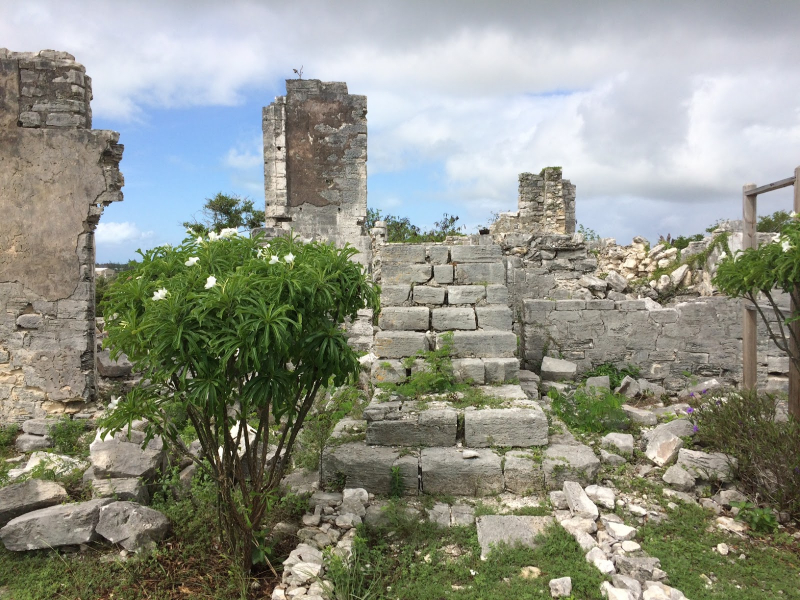
Photo: lifewithldub 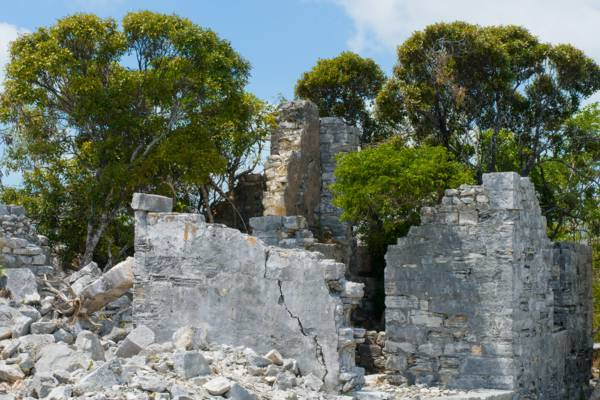
Photo: visittci -
Yankee Town is a late 19th century abandoned and damaged village on West Caicos' remote central west coast. The West Caicos Sisal Company established this site in 1891 as a base of operations for sisal and cotton planting. Yankee Town is one of the best historical places in the Turks & Caicos Islands because of its small size and historical significance. The last standing testaments to Yankee Town are about seven stone structures, various cisterns, wells, machinery, and the railroad.
The fibrous agave sisal was the primary crop of West Caicos, unlike the late 18th century Loyalist era estates on North Caicos, Middle Caicos, and Providenciales, which mostly relied on Sea Island Cotton. The fiber collected from the large leaves of the sisal plant was sent for rope manufacture after first processing.
A fully intact and enormous Burrell Traction Engine, a forerunner to the modern farm tractor, is one of the best-known items left over in this village. Despite the fact that the sheet-iron boiler and tanks have suffered from severe corrosion and deterioration, the cast iron components have weathered well in the marine environment. The engine's original planned destination, on the other hand, remains a mystery. According to records, the equipment was supposed to be sent to West India but ended up in the West Indies' West Caicos. Yankee Town would have been virtually defunct by this year, according to the tractor's construction date of 1904.
Although the grounds surrounding Yankee Town are somewhat open, because to West Caicos' general location and remoteness, entry remains difficult. Several Providenciales boat cruises visit the West Caicos Marine National Park's excellent nearby snorkeling sites on occasion, and it's often possible to swim ashore and scale the low coastal cliffs to visit Yankee Town on such an excursion.Location: Yankee Town, Turks and Caicos Islands

Photo: visittci 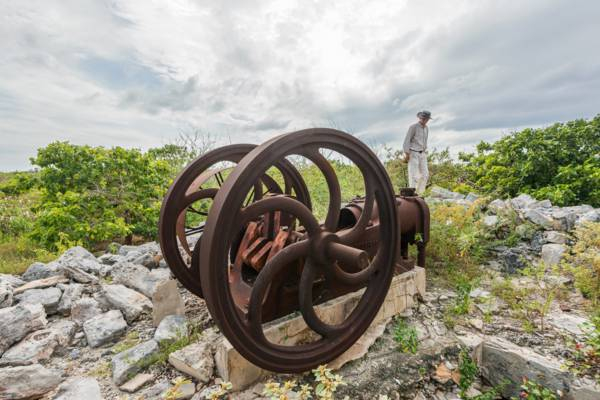
Photo: visittci







